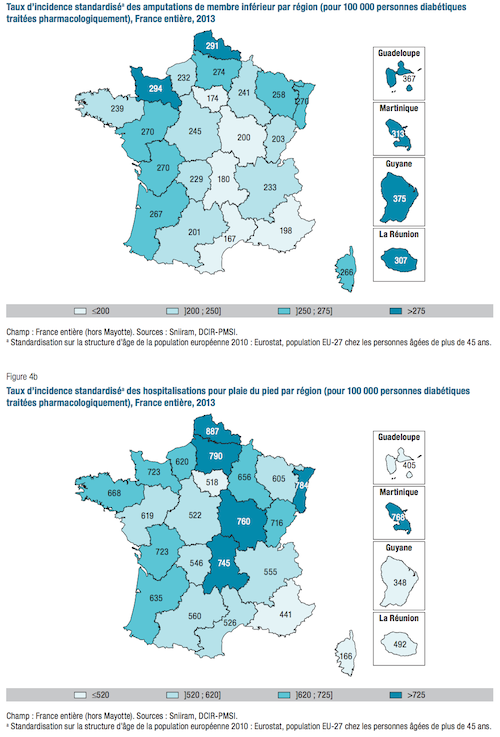Diabetes-related complications are the cause of 8,000 lower limb amputations each year, according to BEH data.

It is one of the complications most feared by people with diabetes: amputation of the foot. Indeed, these patients can suffer from loss of nerve sensitivity in the extremities of the limbs. On their feet, wounds can then become infected and lead to necrosis requiring the removal of the limb.
In France, in 2013, 3 million people were treated for diabetes, or 4.7% of the French population. More than 20,000 of them were hospitalized for a foot injury, including nearly 8,000 for amputation of a lower limb. This is a risk seven times greater than that of the general population, emphasizes the latest issue of the Weekly Epidemiological Bulletin (BEH).

Marked regional disparities
The data show very strong socio-economic disparities among these patients. Indeed, “clinical monitoring remains more frequent among the most privileged”, note the authors of the BEH. Conversely, beneficiaries of Complementary Universal Health Coverage (CMU-C) under the age of 60 and residents of underprivileged municipalities have more podological complications.
The disparities are also particularly marked between the regions: “There are regional disparities in the frequency of complications, especially in the overseas departments and in the Nord-Pas-de-Calais, explains Sandrine Fosse-Edorh, specialist in diabetology at the Institute. of Health Watch. There, amputation rates are much higher, while hospitalization rates for foot injuries remain lower. This shows the need for more developed care in these departments, upstream of the amputation ”.

Target prevention
Of the 41,000 complications from diabetes, more than half affect the foot. Patient education therefore plays a key role: doctors regularly explain to patients the importance of good foot hygiene and regular monitoring of this particularly sensitive limb. Health insurance has even integrated a podiatry package of 4 and 6 annual sessions for grade 2 and 3 diabetics into the comprehensive care package.
Sandrine Fosse-Edorh, specialist in diabetology at InVS: “We must adapt the messages to the profile and recall the importance of prevention at all stages …”
The Strasbourg University Hospital is further strengthening prevention and offering therapeutic workshops around the foot. “Any diabetic patient can enter a wound prevention and treatment program, with the involvement of a diabetologist, a nurse, a chiropodist and a podo-orthotist”, specifies Laurence Kessler. , diabetologist at the Strasbourg University Hospital.
.

















